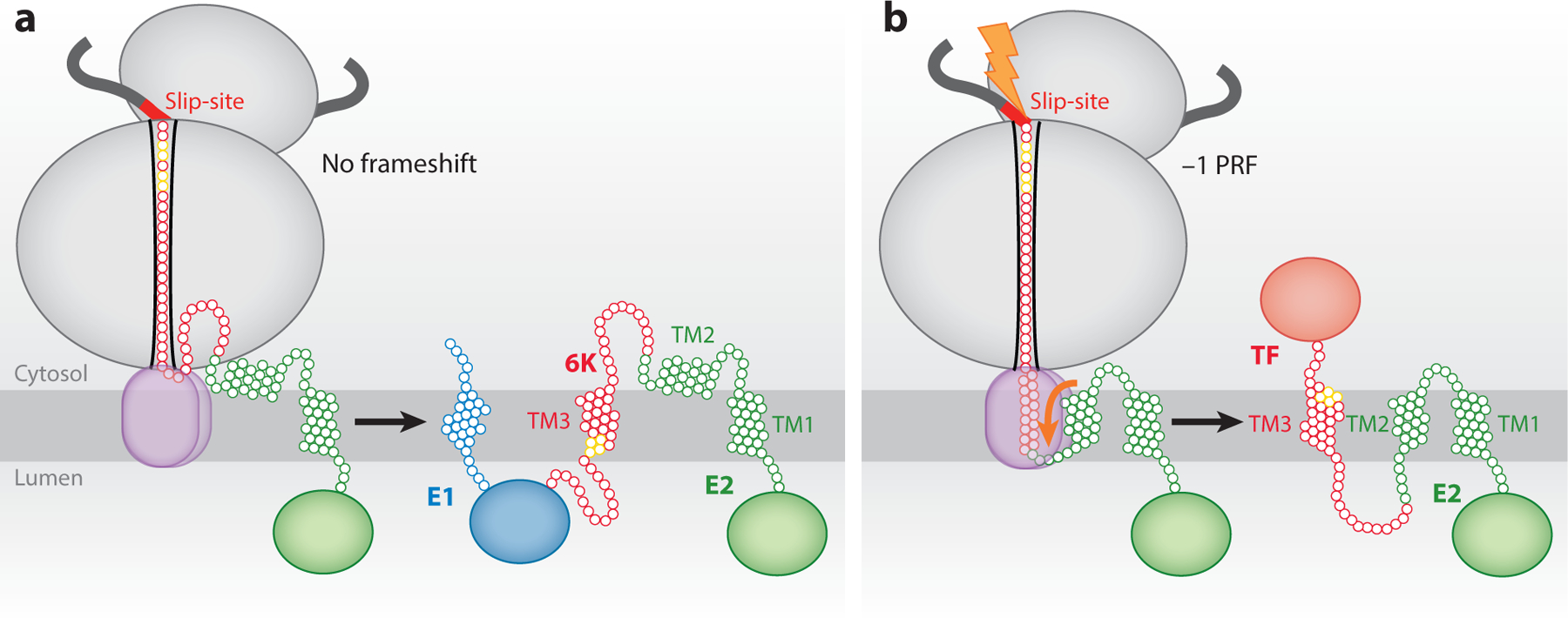Figure 3.

Schematic depicting how conformational transitions in the nascent polyprotein chain affect PRF. The ribosome is shown in gray, and the translocon is outlined in brown. (a) The topological properties of the major form of the nascent alphavirus structural polyprotein of the glycoproteins. In this scenario, the TM2 is too polar to robustly partition into the membrane during translation, no PRF occurs, and the 6K protein is produced. (b) TM2 is hydrophobic enough to occasionally partition into the membrane during translation. When it does, it imposes a tension on the ribosome that stimulates −1 PRF. As a result, the TF protein is translated. In this case, E1 is not produced. Residues in yellow are cysteines that are palmitoylated in TF but not 6K. The residues need to be on the cytoplasmic side for this post-translational event to occur. Abbreviations: E1 and E2, viral envelope glycoproteins; PRF, programmed ribosomal frameshifting; TF, TransFrame protein; TM, transmembrane. Figure adapted from Reference 62.
